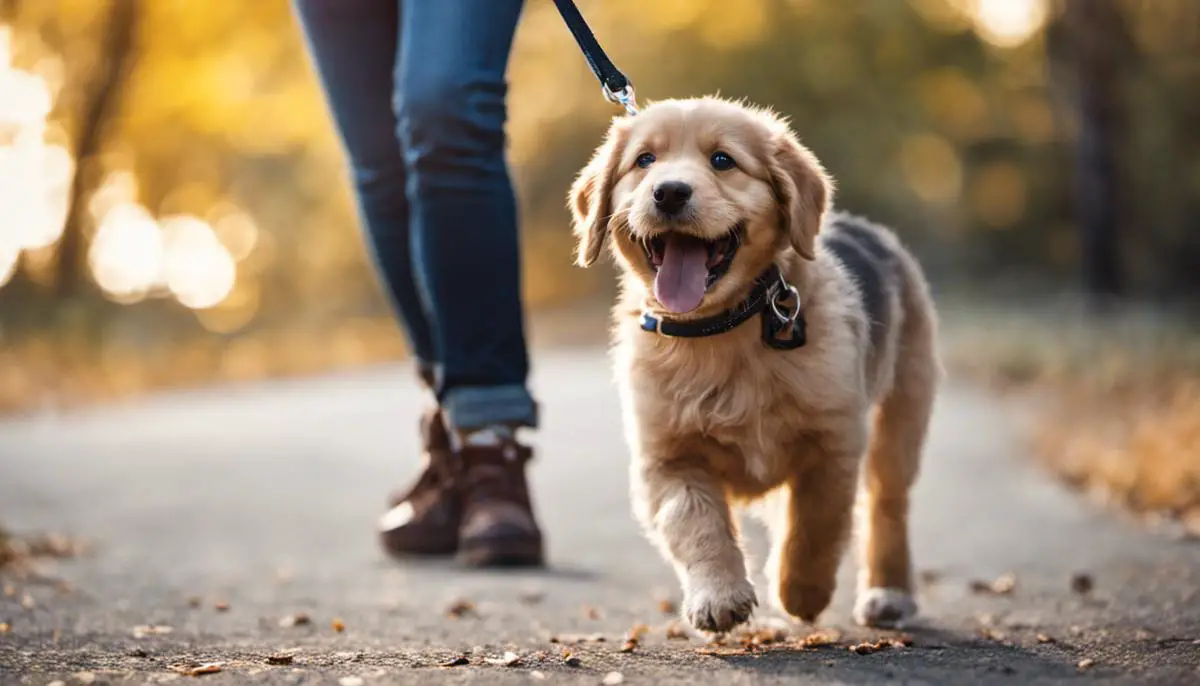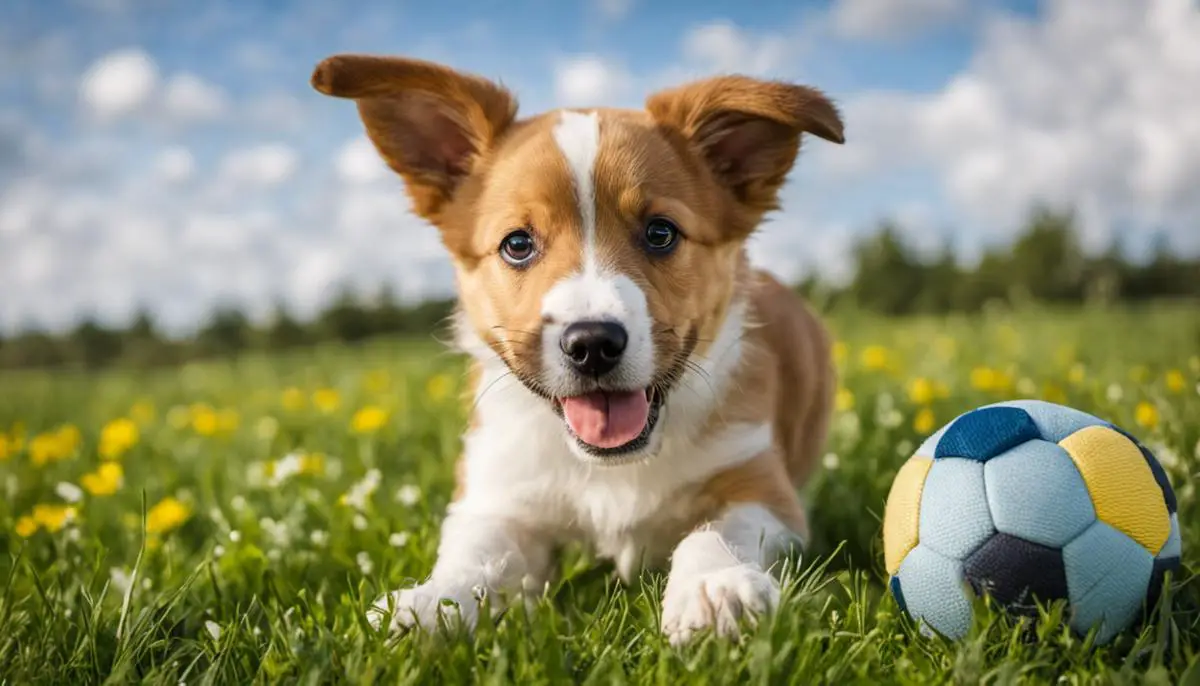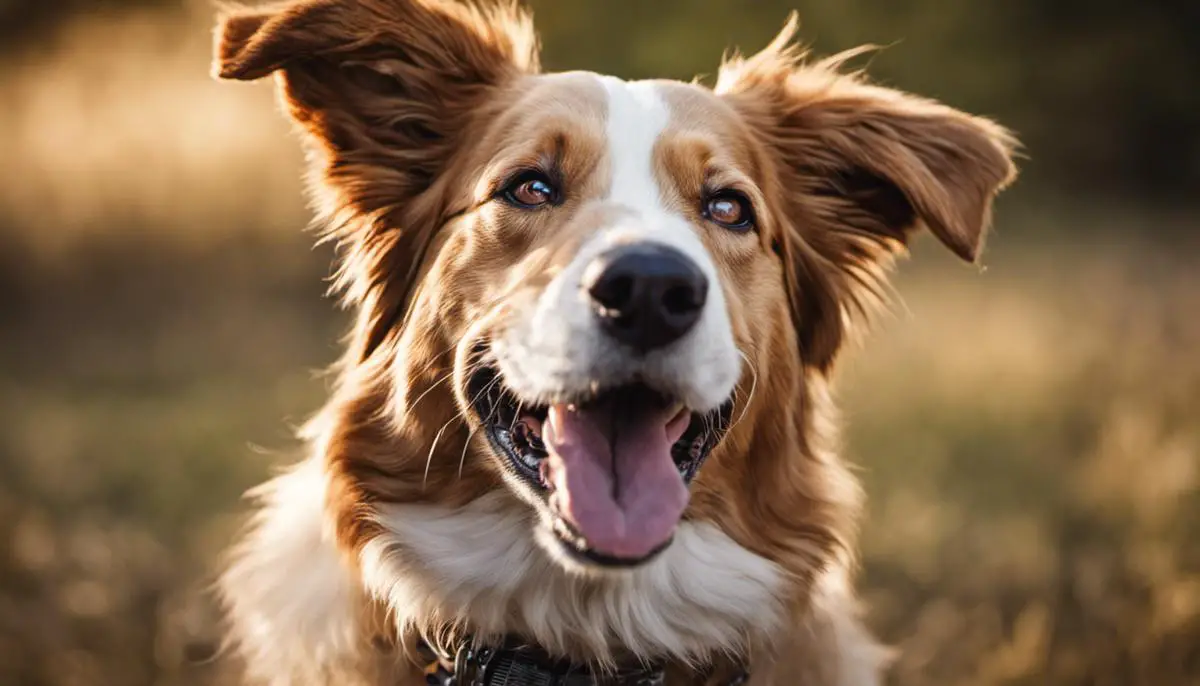Mastering Leash Training: How to Train Your Puppy to Walk on a Leash
Teaching a puppy to walk on a leash is more than just a fundamental skill for pet ownership—it also forms the basis of a bond between you and your new best friend. It's more than just getting your little canine companion to not run off; it's an exercise in mutual trust and understanding. To truly master this, one must delve a little deeper to understand the inherent behaviors and instincts of the puppy.

These behaviors consist of their natural responses to stimuli and deciphering their attention spans in varied environments. Next, is the task to create a positive association with the leash - a symbol of your shared journey. Through gradual introduction and the use of rewards, the leash can become a tool of comfort, rather than a symbol of restraint. Lastly, we will explore some practical techniques to deal with potential challenges during leash training, focusing on encouraging your puppy to walk alongside you without being distracted or resorting to pulling.
Understanding Puppy Behavior
Unraveling the World of Puppies: Basic Behavior Patterns and Responses
Hello, darling readers! Today, we're diving into unchartered territory - that of the rolly-polly, cuddly, drooly ball of fur, endearing affection, and mischief - our very own puppies! If you've been raising puppies or planning to welcome a little fluffy companion into your home, this journey may sometimes seem overwhelming. Rest assured, understanding the primary behavior patterns and responses in puppies can make this journey smoother, and rewarding.
Just like human infants, puppies also go through a series of developmental stages. They express a range of emotions and behaviors that can leave us, parents, a bit puzzled. However, with a little patience and heaps of love, it's not too complicated to decipher their cute little ways.
Teething Phase
Often, puppies between three to six months tend to chew on anything they find. It's part of their teething process, just as our tiny tots do! It soothes their little gums. Now, if we don't want our favorite shoes or furniture to fall prey to this habit, it's best to invest in some chew toys. Their teething period is an essential phase that helps them develop strong jaws.
Socialization Period
Our fur babies undergo their socialization phase between three to twelve weeks. During this time, creating positive experiences with different environments, people, and other pets is vital. It helps them grow into well-rounded, confident, and friendly dogs. However, be mindful to keep these interactions gentle and controlled to avoid causing undue stress or fear.
Training Time
Puppies are natural-born learners. Believe it or not, they start training as early as three weeks old! Reward-based training methods work wonders. They rapidly associate commands with expectations and rewards. Consistent, simple commands accompanied by praise or a treat make an excellent pair in shaping their behavior.
'Zoomies' Phase
Ever seen puppies randomly sprint in the house as if they're participating in a marathon? These energy bursts, often referred to as 'zoomies', are typical in puppies. It’s their way of releasing excess energy. Usually, it signifies a happy and healthy pup!
Barking, Whining, Yapping
Sounds are a significant part of canine communication. Puppies bark, whine, or yap to express needs or alert us, their pack leader, about something interesting or dangerous. They may also use these sounds when excited, scared, or lonely. Paying attention to their 'talk' can help us understand and cater to their needs better.
Digging Habits
Digging can be quite a thrilling pastime for our furry companions. It may be an innate breed trait, a form of play, or an attempt to escape. In some cases, it might be their way of hiding prized possessions (like that yummy bone perhaps?). If this becomes problematic, try providing them with a designated space where they can give in to their primal urge.
Understanding these essential behavior patterns goes a long way in nurturing a positive, harmonious relationship with your cute, four-legged family members. It takes patience, love, and lots of cuddles, but the rewards are indeed far more satisfying.
Remember, raising our puppies right is like sprinkling little seeds of joy throughout our homes, bringing life an unlimited amount of love, warmth, and a lively, wagging tail!

Introducing Leash to Puppy
A Pooch's Perspective: The Best Ways to Introduce a Leash to a Puppy
Being a pet parent can be just as thrilling and challenging as human parenting. One of the early lessons that we need to teach our furry children is leash training. It's not just about restraining, but it's also about ensuring safety and fostering respect between you and your new puppy. So how exactly can we introduce a leash to a puppy? Let's unfold the mystery!
- Create a Leash-friendly Environment
Introducing a leash to a puppy begins with fostering a positive association. First, let the puppy interact with the leash, and let them sniff and familiarize themselves with it. This way, they would see the leash as a non-threatening object and would be less likely to resist when it is eventually put on.
- Make the Leash a Good Thing
Your puppy should associate the leash with positivity. Treats work magic here, kind-hearted pet parents! Treat your puppy each time you put the leash on. It's about creating that connection in their mind that being leashed equals enjoyable moments. This also works wonders to divert their attention from any discomfort they might initially feel.
- Take it Slow and Steady
Exuding patience is essential. Start by letting them wear the leash around the house for short periods. Gradually increase the time, never forcing them but encouraging them. This slow introduction helps them adjust to the weight and presence of the leash without associating it with sudden confinement or restriction.
- Introduce Movement
Once your puppy is comfortable with the leash, start walking with them around the house. It may be a bit awkward initially, but don't fret; they'll catch on! Encourage them with treats and cheerful praise when they follow your lead.
- Practice Outside
Now, it’s time to ramp up the training. Start taking them outside while on the leash, again starting with short walks around the yard, then slowly stretching the distance. It's important to remain patient and consistent. Toddlers or puppies - no one learns a new skill overnight.
- Encourage Good Behavior
Treats and praises are your best allies when it comes to rewarding good behavior. When your puppy walks by your side without pulling or stands still when asked to, reward them warmly. Their desire to please and their love for rewards will ensure faster learning.
Remember, pet parents, introducing a puppy to a leash is an essential step in ensuring their safety outdoors and giving you peace of mind. With patience, consistency, and lots of praise, your lovable furball will be happily trotting by your side on a leash. You've got this, super-parents! Your unwavering dedication to your puppy will make this journey sweeter and more rewarding. Happy leash training!

Leash Training Techniques
The ABCs of Leash Training a Puppy
Greetings, wonderful parents and home caretakers! Today, we're stepping out of the living room and into the great outdoors for a deep dive into leash training your furry family member - your new puppy! Let's continue our previous discussion, filled with need-to-know basics, like teething and socialization, and explore ways to make this training experience a smooth and enjoyable adventure.
After setting up a leash-friendly environment and introducing the leash in a positive light, our journey to leash training isn't over just yet. There’s an expansive, often exciting world outside that's waiting to be discovered by your puppy. So, let's learn how to safely embark on this exploration, shall we?
Step One: Gradual Exposure
While taking your puppy outside for the first time, it's essential to start in an environment that feels safe and secure. Go to a quiet, enclosed space, such as a backyard. This reduces the chances of running into any distractions that may hinder your training progress. Reduce any potential fear or nervousness by ensuring your puppy is comfortable before pushing them too far.
Step Two: Walk Before You Run
Start with short, slow walks, letting your puppy be the guide initially. We're sure you're raring to go but hold up! Allow the puppy to set the pace. After all, this exercise is for them. Stand on their right side and let them explore as you walk together.
Step Three: Mastering Commands
Teach your puppy leash manners like 'heel' and 'stop'. Initially use a short leash to ensure your puppy remains close to you. By saying 'heel', your puppy should understand they have to walk beside you. Similarly, 'stop' indicates your puppy has to stop in their tracks. For success, consistency is key. Repeat these commands until they are perfectly obeyed.
Step Four: Switching up the Pace
Adjust the speed of your walks as your puppy grows more familiar with the leashing process. The goal is to have your puppy adapt to different paces and conditions. Try walking fast, then slowing down, even coming to a sudden stop. This type of variability trains the little furball to be prepared for any situation.
Final Step: Rewarding Good Behavior
Leash training a puppy includes lots of rewards. Stock up on those doggy treats! Reward your pup every time they obey a command or respond positively. Praise can also work wonders. Saying 'Good boy' or 'Good girl' reinforces their good behavior and encourages them to repeat it.
Embarking on the journey of leash training your puppy can be challenging- but also rewarding and exciting! Take one small step at a time, keep patience at the forefront, and with these useful tactics, rest assured that your puppy will be leash-savvy in no time!
Remember, happy puppy, happy home! Now let's get to training!

Successfully training a puppy to walk on a leash can be quite a rewarding journey, for both the human and the puppy. Certainly, it requires patience, dedication, and a thorough understanding of your puppy’s behavior. But the fruit of your efforts delivers a bond of understanding and mutual respect that is irreplaceable. Correct leash-training techniques will not only solve walking problems but also prevent future ones. Through gradual exposure, positive associations with the leash, and practical training strategies, you and your furry friend will be able to enjoy many calm, enjoyable walks. Remember to always end on a positive note so that your puppy associates the leash and walking on it with good experiences. With these tools, your walks together will be a source of joy and mutual exploration, strengthening the bond between you and your furry companion.
What is your biggest challenge when training your puppy to walk on a leash?
Legal Disclaimer
The information provided in this blog post is for informational purposes only and should not replace professional advice from a veterinarian or certified dog groomer. Always consult professionals for any serious grooming or health concerns involving your pet.





Comments